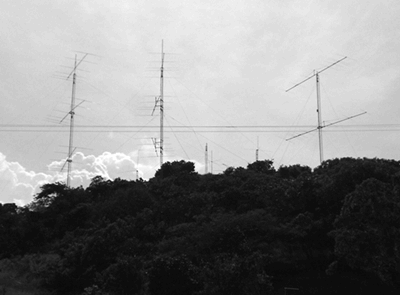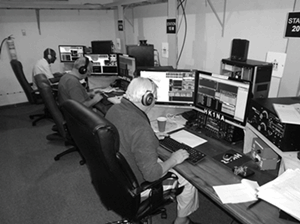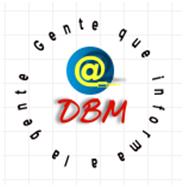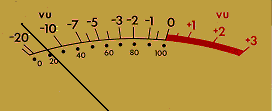|
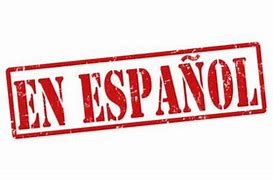 
In May 2013 I received fantastic news from Juan Carlos, CO2JD, that we both had been invited by Jorge, HK1R, to participate in the CQ World Wide CW event at the HK1NA contest station. E-mail exchanges with Pepin, HK3TK/CO2TK, confirmed the good news. From that moment there were countless e-mails and many visits to Havana from Las Tunas to deal with many bureaucratic hurdles and consular requirements, which Jorge always helped us to deal with in a timely manner. Finally, one day before our flight, I had the visa in my hand. Juan Carlos, who resides in Havana, had received his visa earlier.
We flew to Panama City in the morning of November 19, and boarded a connecting flight to Cartagena. We arrived in this beautiful Caribbean city at noon the same day. Pedro, HK1X, greeted us at the airport.
Pedro proved to be just what we had imagined, after so many years of contacts via radio — someone of excellent character and, above all, a very good host. He took us to a small, very comfortable hotel. We agreed that he would pick us up that evening for dinner and a tour of the old part of Cartagena City. Juan Carlos and I decided to go out for some lunch and then spend the afternoon checking out the surroundings. Cartagena is undoubtedly a very beautiful city, and its inhabitants make it proud with their modesty and their amazing politeness. We soon discovered that friendliness and great personality are distinct characteristics of the Colombian people, at least for the “costeños,” which the inhabitants of the northern coastal regions call themselves.
Back at the hotel, I finally had time to e-mail my family and friends and bring them up to date on our trip. To that end, I had taken along an iPod, and I never missed an opportunity to connect to the internet via WiFi. In the evening we went with Pedro to see a part of the old city, which somewhat reminded us of historic Havana with its cobbled streets and an architecture dating back to that common era when the two cities were founded.
Jumanji About 9:30 the following morning, Pedro picked us up and took us to the terminal for the “busetas,” which is what the locals call the small buses that provide a primary means of transportation between towns and cities in the Caribbean. We boarded the buseta for the Cartagena-Barranquilla route. Pedro instructed the driver to make a stop at a gas station close to a farm, where Jose, HK1R, has built his station. Two motorcycle riders were supposed to be waiting there to take us to Jumanji. What actually showed up were two “motorcycle taxis.” We were told that this means of transportation was very common, to meet the transportation demand stemming from the opening of a nearby Chinese-owned factory. As we approached the Jumanji station, holding on for dear life to our luggage in the back of the motorbikes, the antenna field became visible, and I was beginning to comprehend the enormity of this installation.
Salim, HK1T, greeted us upon our arrival and invited us into the building that housed the radio room, a huge kitchen with a dining and assembly area, sleeping quarters for at least 15 people, and three large bathrooms with showers. Salim escorted us to the radio room, so we could get acquainted with the equipment. Stepping inside, I further realized how privileged we were to have been invited to operate from there. Seven comfortable operating positions equipped with Icom radios — 7600s, 7700s, and 7800s — and Alpha 8410 amplifiers added to that emotion. Salim is one of the leaders of the Jumanji “brotherhood.” He was working on the rotator for a cubical quad when we arrived.
Jorge had already welcomed us by telephone and Pedro kept him updated during our stay in Cartagena. We learned that Jorge was in Barranquilla to meet some other contest colleagues arriving from the US and Brazil. He arrived around 3 PM accompanied by Lars, K9FY; Ville, PY2ZEA/OH2MM, and Thomas, PY2ZEA/SMØCXU. They, along with Mariano, LU8EOT; Juan Carlos, CO2JD, and me, completed the group of foreign operators. I met Mariano a bit later when he arrived from the home of Bolmar, HK1MW, where he was installing an SDR for our skimmer with Jaime, HK1N.
Later in the day, Jorge asked Juan Carlos and me to come along on a trip to Barranquilla to assist with some of the necessary shopping for the next few days. It quickly felt as though we had known each other forever, and we talked about many things during the trip to the city. We noticed impressive building construction activity everywhere we looked. The part of the city we saw reminded us of some of the more modern parts of Havana. After shopping, we picked up Frank, HJ1FAR, another member of the team, who would be responsible for computer issues and general troubleshooting.
By Thursday morning, the whole team had assembled, except for Pedro, who had to deal with some business issues, and Pepin, HK3TK, who had missed his flight from Bogota. Bolmar, HK1MW, and Jaime, HK1N, were like the patriarchs of the group, not only because of their seniority, but also because of the respect they inspired and deserved. The morning was abuzz with activity, with everyone attending to some last-minute details or projects. We in the Cuban contingent helped Salim make baluns for the cubical quad from 75 Ω coax. After lunch, Bolmar invited us for a tour of the antenna fields. In particular, he took us to see one of the two 5 element 80 meter vertical arrays, which he had worked on. While admiring his magnificent job and hearing him speak so passionately about it, I felt like I was at an initiation rite, facing a radiating monster and with Bolmar as the ceremonial high priest.
The town certainly doesn’t dazzle visitors with its beauty, but it possesses a particular magical simplicity. Its typical small-town character, the parish, the park and everything else I saw brought to mind the illustrious costeño poet and author Gabriel Garcia Marquez. A colorful sculpture of Simon Bolivar the Liberator stood in front of a building, which I surmised could only be City Hall. After a brief tour, we returned to Bolmar’s house. Mariano and Jaime were still working on the skimmer SDRs, which, for some reason, did not work as expected. This, with just 24 hours before the start of the contest! We suspected at one point that the receiving antennas were the problem, and we decided to raise them as high as their feed lines would permit. In the end it turned out to be a software issue, and the problem was solved just as night was falling.
By the time we got back to Jumanji, it was late at night. I sat down at the 40 meter station. The plan was that Pedro and I would operate this position in 4-hour shifts during the first part of the contest, and that I would also do some 10 meter operating later. Because some of our colleagues were absent for some of the shift changes, we had to alter our original plan. That night I had the pleasure of operating this magnificent HK1NA 40 meter station — an IC-7800, an Alpha 8410, and an array of antennas to select from. For the most part I used the 3/3 stacked Yagis.
There was also a 5 element vertical array aimed toward Europe as well as various wire antennas and a SAL-20 receiving system. Being accustomed to very high noise levels at my home station, I was in paradise and enjoyed working a pileup that kept up for the entire time I was on the air. One of the many Cuban stations I worked was Douglas, CO8DM, who phoned my wife. I managed to speak to her myself a little later. It was an indescribable experience to hear my loved ones from my home station — a veteran TS-130 putting out a mere 10 W. When I shut down the station, I had logged more than 650 contacts.
With Pedro’s and Pepin’s arrival that morning, the team was complete. Pepin was the last one to arrive. He is a Cuban who has lived in Colombia for many years. This was the first time we’d met in person after numerous radio contacts. Pepin holds CO2TK, and, while operating from Cuba, he was one of the most active DXers and contesters on the island. I spent part of the morning at the 10 meter station — a K3 with an Alpha 8410 and choice of excellent antennas. As it was for 40 meters, it was a pleasure to work pileups with the added advantage of no noise. Around midday, I made my way up the hill, where most of the towers are located. Salim was already there, and two of his tower workers, aided by Frank, Pepin, Juan Carlos, and me, hoisted the new cubical quad for the multiplier station to the top of the tower. When we finally had the assembly completed, it was already a few minutes past 5 PM, so we headed back down to the station for a meeting and a pre-contest team photo.
A few minutes before the contest started, each first-shift operator was parked on a clean frequency — Bolmar, HK1MW, on 160; Jaime, HK1Nm on 80; Pedro, HK1X, on 40, Ville, PY2ZEA, on 20; Jorge, HK1R, on 15, and Mariano, LU8EOT, on 10 meters. At 0000 UTC November 23, the powerful signals from HK1NA issued forth! An hour into the contest we had accelerated to a rate of 672 QSOs per hour, and we had 591 contacts in the log. I had been planning to catch some sleep and then relieve Pedro a bit before 1100, but I could not fall asleep. Instead, I decided to wait for my turn while watching our contest progress, so I parked myself in front of a screen in the kitchen meeting area. When shift change came around, we already had 650 contacts in the log on 40 meters, and 2150 total. The next few hours were intense, and by the time I handed it back to Pedro we had around 1200 contacts in the 40 meter log. A few minutes later, I relieved Bolmar on Top Band, as he was not feeling well, and I honestly was not feeling sleepy.
Working 160 at HK1NA was a wonderful experience because of the marvelous setup for this band — an IC-7600 and an Alpha 9500 amplifier, a full-size vertical, dipoles and a Hi-Z receiving system. Using this system was a new experience for me because of its directivity. At 6 AM, I returned to 40 meters and stayed there until the band closed at 8 AM, and then I went to sleep for the first time.
I spent the day filling in for short periods on 10 and 15 meters, although later in the evening I operated on 15 for almost 3 hours. By then we were at 8000 contacts and maintaining a rate of 468 QSOs per hour. Jumanji’s setup on 15 meters is an IC-7700 and an Alpha 8410 to a stack of 6/6/6 Yagis and a vertical. At 7 PM I started my official shift on 40 meters. Pedro was supposed to relieve me at 11 o’clock, but he was not feeling well, so a few minutes before midnight, I was back in the operating chair for 40 meters. Feeling better, Pedro returned a couple of hours later, and when I went for some rest, our statistics showed 11,600 contacts and a rate of 280 QSOs per hour — typical for that early in the morning.
I woke up at 7 AM and immediately went to 40 meters. A little later, having closed that station, we were approaching 12,800 contacts. I spent the rest of the day filling in on 15 and 10 meters and working the multiplier station — An IC-756PROIII and an Icom PW-1 amplifier, with a 4 element cubical quad multibander. Something I enjoyed during the contest, in addition to the magnificent pileups, was the maneuverability that CW Skimmer offers in the hunt for multiplers.The Win-Test logging program easily identified which spots were needed multipliers, and double-clicking the displayed multiplier call sign immediately took the transceiver to that station’s frequency. This makes it possible to change frequency and complete a QSO quickly enough not to lose your run frequency.
I spent the final 4 or 5 hours of the contest on 10 and 15 meters. Contrary to my expectations, 10 meter conditions were not as good as they’d been on Saturday; the same applied to 15 meters. Typically these two bands are very productive at the end of the contest. Without doubt, this contributed to a result that did not meet our expectations. In the end, we failed in our initial objective to exceed the 2012 score, and we ended up with 42,822,198 points for a total of 15,156 valid contacts, 203 CQ Zones, and 756 countries worked.
Nearly everyone started back home shortly after the contest ended, but Lars, Juan Carlos, Frank (who lives in Barranquilla), Mariano, and I stayed on for a while. I had no problem at all spending another night at Jumanji and hoped to work 40 meter SSB for the first time. Despite my fatigue, I was going to take advantage of all the amusements that HK1NA had to offer.
The next day, Bolmar came by and invited Juan Carlos and me on another trip, before it was time for our farewells. He was later accompanied by his neighbor and brother-in-law Freddy, HK1ANP, whom we had known before at Jumanji. We went to Baranoa, which turned out to be much like Juan de Acosta but with slightly more commercial activity.
While visiting a shopping center, I was taking a picture with Juan Carlos as the model. The manager approached and respectfully explained that it was the company’s policy not to allow picture taking. When Bolmar told to him that we were visitors from Cuba and that he and Freddy were local customers, however, he went out of his way to give us a tour of the place. This experienced helped to reinforce our already-positive opinion of the Colombian people . On our return, we took the opportunity to see Freddy’s magnificent station and to exchange cards. It was already 3:30 PM, and Jose was waiting for us at Jumanji. About 5 in the afternoon we took off on the road to Barranquilla. As we left Jumanji, it seemed to me that it was entering a magic state of slumber, although I’m sure that HK1NA never really sleeps from one contest to another.
I’ve never learned to appreciate farewells, especially when I’m leaving behind good moments and great friends. At 9 o’clock sharp, we departed for Cartagena. We arrived in Havana at 6:45 PM, ending a week of intense emotion and unforgettable experiences. It was a week that, in an almost mystical way, saw the confluence of friendship, a common interest, and a love of ham radio.
I would like to thank those who, from the beginning, helped bring about the happy outcome of this event. Above all, and despite his aversion to recognition, Jorge receives our profound gratitude for bringing our presence at HK1NA beyond the realm of a dream project.
Since 1999
"Gente que informa a la gente"®
Powered:
Compunetsy Services & Leasing |
